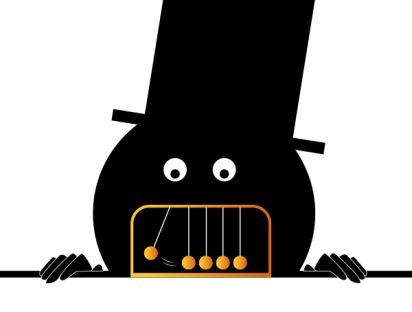
By Fernanda Arreola (ESSCA) and Johann VITREY-TARDIF (ISC Paris, IESEG Paris, Paris Perfume School and Thelma Business School in Dakar (Senegal)
Innovation is essential, yet not always easy. This article, based on lessons from the perfume industry, discusses how to innovate in business sectors where differentiation is difficult to achieve.
France holds a unique position as the epicentre of the perfume world. This is thanks to its historical heritage that has helped build an empire of luxury and mainstream brands that proudly present the citation of Paris on their bottles. Throughout history, people from all corners of Europe have turned to these perfume houses for the latest elegant fragrances, made possible by them capturing scents from flowers, wood, and spices, but most importantly, thanks to nonproduct-related innovation.
The roots of French perfumery can be traced back to Louis XIV, known also as the Sun King, who played a pivotal role in its development. Renowned for constructing the opulent Palace of Versailles, Louis XIV established what would later be known as the perfumed court. Historians narrate that Louis XIV was scared of bathing, believing that doing so would make him sick and spread disease. Therefore, the members of his court were encouraged to spray themselves with perfume upon entering the vicinity of the palace.
This particular hygienic belief made perfumery to be treated almost as a science, implicating the idea that fragrances also have medicinal benefits. As a result, both men and women incorporated substantial amounts of fragrant elixirs into their grooming routines. Fragrances were even sprayed on furniture and, as rumours suggest, the fountains.
The fragrance legacy continued over time, despite a halt as a result of the French Revolution. The execution of the perfumed nobility led perfumers to scale down operations and conceive new ways to impulse the popularity of perfumes. Over time, France’s perfume industry experienced a resurgence, evolving into one of the largest creators and suppliers of perfumes. Today, it caters to a diverse audience, ensuring that everyone, not just the nobility, enjoys a fresh and fragrant experience.
The non-so-innovative nature of fragrances
Parfums are made of base notes, middle (heart) notes, and top notes. Base notes include patchouli, vanilla, sandalwood, and musk. Heart notes are made of floral notes, spices, and herbs. Top notes include citrus, fruity notes, and certain herbal notes like basil. After mixing these ingredients, perfumers must apply fixatives (amber or resins) and modifiers (they can give a fresh or cleaner note to the fragrance). Once the perfumer has made a choice, he or she will carefully blend the ingredients to create a fragrance.
However, not all fragrances are pleasant to our senses. We are also not all equally sensitive to the sometimes-infinite differences in ingredients between one parfum and another. Perfumers want to evoke in us a sense of proximity, and other fragrances lost in our memories, which makes it more likely that they will include aromas that were popular in the past. For example, patchouli, a base note, has been used since ancient times. To this date, it is a largely used base note that is included in a wide range of fragrances. Some people even simply use patchouli oil. Yes, we often smell patchouli in our daily lives.
If it is not the product, then what?
Gaining inspiration from what is done in the perfume industry can help you look at your product’s commercialisation and communication efforts differently. Most importantly, it can give you hints on how to innovate in sectors where competitors propose very similar products and where product innovation is unlikely to provide an edge for differentiation.
Container: If you cannot change the product then you can change its packaging. Furthermore, this packaging can change in nature (box, bottle) but even in terms of the raw material it uses (recyclable, reusable, washable). A recyclable example of a container in perfumes is Bois Imperial, the bottles are made of glass, without a case, with a sustainable approach. Other examples include SEXY by Honoré des Prés with original packaging that exudes authenticity and the charm of yesterday. We can also take the example of Angel by Mugler, the pioneer of bottle refills.
Concept: The concept proposed by the product can be altered by simply changing its colour and how it addresses a community (gay pride, cancer survivors, nationality, etc.). An example is Blood Concept, a brand where you choose the blood type you want to wear.
Communication: This consists of changing the messaging. For instance, if you can’t make people smell your product, how do you make them buy it? You can for example evoke other things that can give a sense of the sensorial emotions that will be experienced once used. For example, the candle company Promenade à Auvers bases scents on the original scenery that Vincent Van Gogh used to inspire his paintings. As for storytelling, we can also find the incredible job of Eight & Bob which comes packaged as a book.
Retail: A product’s positioning can be based on the messaging around it, the discourse a vendor uses to present it, or even the concept that the buyer is searching for. The Nose perfume diagnosis allows you to create your olfactive portrait and receive personalised recommendations.
Technology: Industrial innovation can help producers innovate the processes around the manufacturing of your products. Furthermore, it can make your product available otherwise. A great example is the sniffing device, P’tit Sniff. Le P’tit Sniff is a mini personal olfactory diffuser to take with you everywhere, adjustable according to your desires thanks to interchangeable cartridges.
Network: People rely more and more on where they find the product as a basis for their decision to purchase or not. It is not only about selling online but also about who the distributor is. Perfumist is the first collaborative perfume advisory application, created by perfume enthusiasts, to help you discover fragrances that best suit you.
© EBR Media Ltd, 2023. The definitive, and edited version of this article is published in The European Business Review www.europeanbusinessreview.com




